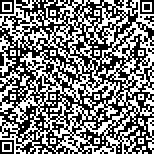邓宝梅,梁丽丝,赵嘉欣,等.脑卒中吞咽障碍患者食管清除功能异常与口咽期吞咽生理及渗漏误吸的相关性分析[J].中华物理医学与康复杂志,2023,45(12):1078-1083
扫码阅读全文

|
| 脑卒中吞咽障碍患者食管清除功能异常与口咽期吞咽生理及渗漏误吸的相关性分析 |
|
| |
| DOI:10.3760/cma.j.issn.0254-1424.2023.12.003 |
| 中文关键词: 食管期吞咽障碍 食管清除 脑卒中 MBSImP 吞咽生理成分 渗漏 误吸 |
| 英文关键词: Esophageal dysphagia Esophageal clearance Stroke Barium swallowing impairment profiles Swallowing components Penetration Aspiration |
| 基金项目: |
|
| 摘要点击次数: 4130 |
| 全文下载次数: 4318 |
| 中文摘要: |
| 目的 对脑卒中吞咽障碍患者食管清除功能异常的发生率及严重程度进行回顾性分析,探讨脑卒中后食管清除功能异常患者的临床特点,并分析食管清除功能异常与口咽期吞咽生理及渗漏误吸间的相关性。 方法 选取2019年10月至2023年4月期间在我院康复科住院、并完成吞咽造影检查(含正位像食管清除观察)的174例脑卒中患者作为研究对象,从其医疗记录中收集临床资料数据,并针对患者吞咽5 ml高稠度食物的正位像及侧位像造影结果进行分析。采用改良钡剂吞咽障碍造影评估量表(MBSImP)的食管清除(EC)项目对患者的食管清除功能进行评级,并对其口腔期及咽期的各吞咽生理成分进行评分。采用Rosenbek渗漏误吸量表对患者进食的安全性进行评级。 结果 在174例入选患者中,共发现70例(40.23%)患者有食管清除功能异常,且大部分(共43例)患者表现为食管中到远端滞留。与食管清除正常组患者比较,食管清除异常组患者的平均年龄更高、咽期总体障碍程度更严重(P<0.001)。通过相关性分析发现,入选患者食管清除功能与口腔期范畴的各吞咽生理成分及渗漏误吸评级均无显著相关性(P>0.05),而与咽期范畴的喉上抬(r=0.229,P=0.002)、舌骨前移运动(r=0.244,P=0.001)、咽蠕动(r=0.521,P<0.001)、咽收缩(r=0.309,P<0.001)、食管上括约肌开放(r=0.337,P<0.001)、舌根收缩(r=0.261,P=0.001)及咽部残留(r=0.260,P=0.001)均具有显著正相关性。 结论 脑卒中吞咽障碍患者可同时合并食管清除功能障碍。食管清除功能异常与年龄及咽期吞咽障碍严重程度相关。咽期吞咽生理异常可能伴随更高的食管清除异常发生率,咽蠕动减弱常提示伴随更严重的食管清除异常。将正位像食管清除观察纳入常规吞咽造影检查中,有助于筛查食管功能异常以早期识别临床问题,提高吞咽评估的全面性及系统性。 |
| 英文摘要: |
| Objective To explore the incidence and severity of esophageal clearance impairment in stroke survivors with dysphagia, the clinical characteristics of patients with abnormal esophageal clearance, and their relationship with swallowing physiology, penetration and aspiration. Methods Clinical data were collected describing 174 stroke survivors whose swallowing had been studied videofluoroscopically. In each selected case there was a good anterior-posterior view of esophageal clearance. Their anterior-posterior and lateral imaging results while swallowing 5ml of high-consistency food were analyzed. The esophageal clearance item of the modified barium swallow impairment profile was then used to rate each subject′s esophageal clearance and each physiological component of swallowing in the oral and pharyngeal phases. The Rosenbek penetration aspiration scale was employed evaluate the safety of their swallowing. Results Seventy of the patients (40.2%) displayed abnormal esophageal clearance, and more than half of the 70 (43 patients, 24.7%) showed mid- to distal esophageal retention. Those with abnormal esophageal clearance had a higher average age and more severe overall impairment in the pharyngeal phase of swallowing. Esophageal clearance was not, however, significantly correlated with swallowing physiology in the oral phase or with penetration or aspiration grade. There were, however, significant positive correlations with laryngeal elevation, anterior hyoid excursion, pharyngeal stripping waves, pharynx contraction, upper esophageal sphincter opening, tongue base retraction and pharyx residue. Conclusion Stroke survivors with dysphagia may display abnormal esophageal clearance. The risk is closely related to age and the severity of the dysphagia. Abnormal physiology during the pharyngeal phase of swallowing and reduced pharyngeal stripping may predict abnormal esophageal clearance. Swallowing assessment can be made more comprehensiveness and systematic by incorporating anterior-posterior videography in routine barium swallowing studies. |
|
查看全文
查看/发表评论 下载PDF阅读器 |
| 关闭 |
|
|
|